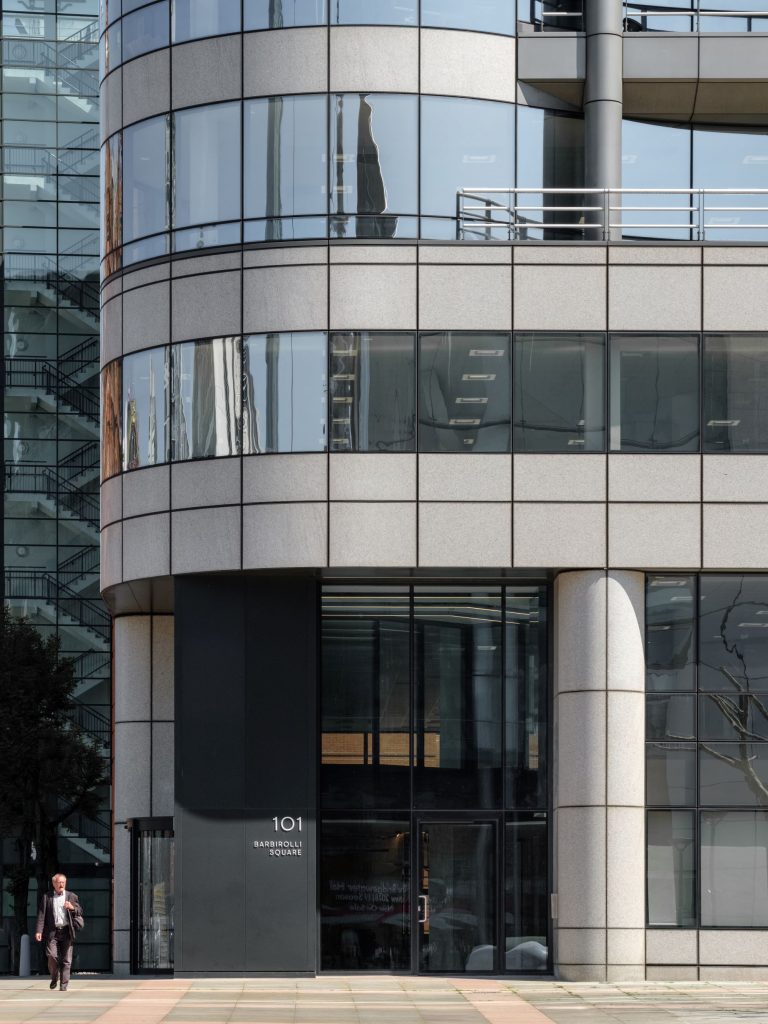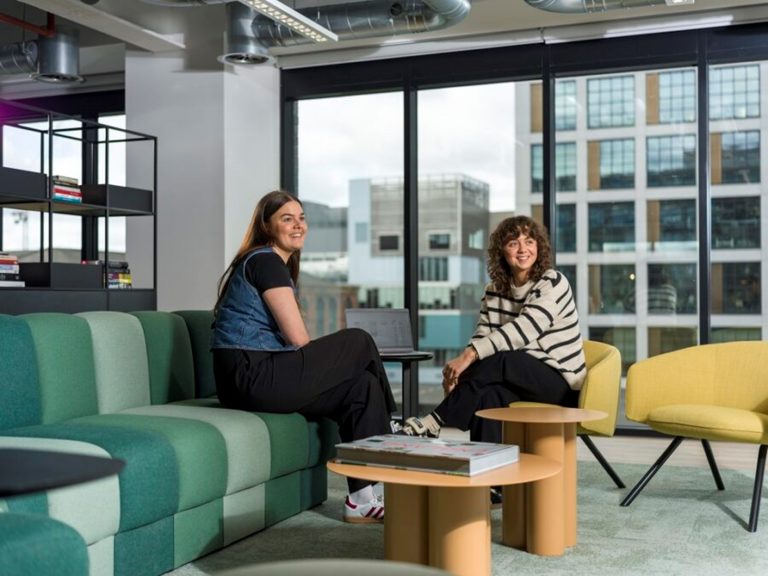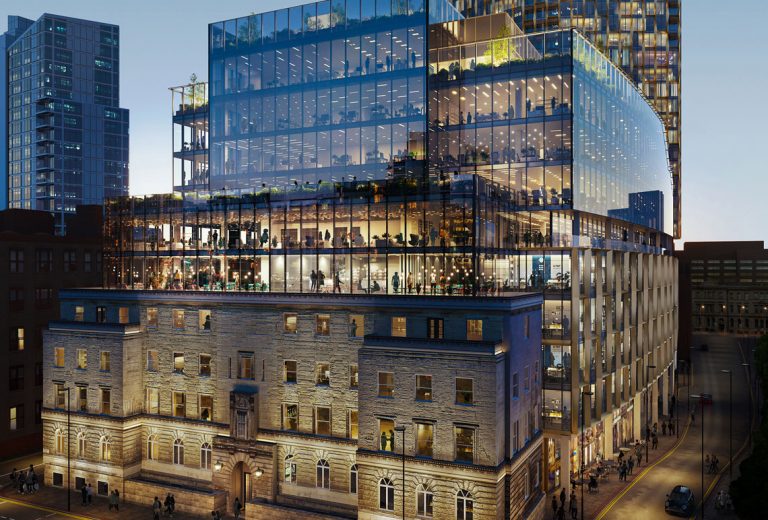Office Ventilation Guidelines during Covid-19
Lewis Mills | 06 May 2020
One of the biggest challenges facing employers at this time of uncertainty is making sense of the building they occupy. Advice and guidance may mention drastic changes to previously automatic interactions, such as shaking hands or sharing lifts. Whilst these changes may be difficult, but manageable, consideration should be made to technical adaptations that sensationalist news reports are portraying as a serious threat to health yet have never crossed most of our minds previously. Below we separate fact from fiction about what ventilation is and what you can do about it.
The guidance in this field is continually changing following new research and understanding of the disease, and the behavioural restrictions in place will also have an impact on how to manage building systems.
It is also important to note that the guidance is aimed for buildings where infected persons will only occasionally occupy the premises, such as offices and schools. Hospital and healthcare buildings are subject to separate guidance.
Guidance should be used in accordance with social distancing measures outlined in OBI’S Guide for Returning to Work Safely and anybody displaying symptoms of the virus should self-isolate for 7 days and not attend the workplace. The guidance is to help limit the spread of the virus if a non-symptomatic person is occupying the building or if somebody is taken ill on the premises.
What is ventilation?
Ventilation is necessary in buildings in order to remove stale, used air and replace it with fresh air. This ensures internal temperatures are moderated, moisture is not accumulated, and it improves the comfort and wellbeing of the occupants.
A building may be ventilated naturally through windows, or it may have mechanical ‘forced’ ventilation. This is particularly imported in large spaces that are too deep to be ventilated from the perimeter windows, such as offices. If the building is also next to a busy road and therefore air quality is poor, or in a noisy area where there will be sound pollution, mechanical ventilation will be necessary.
How is the virus spread?
In order to determine how to limit the spread of the virus, we need to acknowledge all transmission routes of the infectious agent. This may include methods of which the extent is not well understood but have not been ruled out, such as ventilation systems.
Via particles emitted
We understand particles being emitted from coughing and sneezing is a method of infection, Small particles (less than 5 microns) are born from larger particles (10 microns) evaporating. This means even if the particles projected by an infected person are larger than this, they can still stay airborne for hours and travel large distances.
Via surface contact
Coronaviruses are 80-160 nanometre squared, and they remain active for many hours/days. This means an infected particle can settle on a surface and be picked up by another person whilst the particle is still ‘alive’ and infect their body. This highlights the need for not only increased cleaning methods but also the continual encouragement of hand washing before putting your hands near your face.
What can you do?
Increase Air Changes
To put it simply, if we are aiming to remove any trace of the infectious agent we must increase air supply and exhaust ventilation to all parts of the building.
To do this in buildings with mechanical ventilation systems, extended operation times are recommended. For example turning the ventilation system on 2 hours before the office is in use and for 2 hours after people have finished their working day.
In demand-controlled ventilation systems, it is recommended to keep the ventilation on 24/7. When people are absent, simply lower the ventilation rates but do not switch off completely.
In buildings that have laid empty due to the pandemic it is not recommended to switch ventilation systems off, as this allows for mould growth which can also be harmful to our respiratory health. Instead of laying idle, operate the unit continuously at reduced speed to ensure there is limited energy consumption, but giving the best chance of maintaining air quality of the building and remove harmful contaminants.
Window Airing
General social distancing guidelines recommend we stay away from crowded and poorly ventilated spaces. However, this is not always possible. Where practical, in buildings without mechanical ventilation systems occupants should actively use openable windows. Window airing then is the only way to boost air change rates. These should be opened effectively to ensure the airflow will ‘rinse’ the space, and not escape too quickly out of another window. It is also recommended that one person is designated to do this to reduce contact with others.
Attention should also be paid to the toilet facilities. It should be established if there is adequate extract ventilation from toilets. If not, it is also important to keep windows open in other spaces in order to achieve cross ventilation throughout the building.
Humidification
In well-understood diseases, it is possible to establish what air temperatures and humidity levels are harmful to the transmission of the virus, and buildings may operate at these levels. Sadly, in the case of COVID-19 this is not possible as coronaviruses are quite hardy and resistant to environmental changes. Temperatures and humidity levels that are understood to be damaging are a very high relative humidity levels above 80% and a temperature above 30˚. In order to protect the thermal comfort for occupants, this is not attainable, and the virus must be removed in other ways.
Duct Cleaning
Duct cleaning is not an effective defence against coronavirus infection because the ventilation system is not directly a contamination source. Any virus particle that enters the ventilation system attached to other small particles will not get trapped in the duct but simply pass through, rendering duct cleaning ineffective. Therefore, guidance about heat recovery and recirculation should be followed and normal duct cleaning and maintenance procedures should remain. Increasing fresh air supply and avoiding recirculation of ‘used’ air is the most effective measure to achieve air cleanliness and protect building occupants from Covid-19 and other harmful infectious agents.
Conclusion
There are two scenarios applicable to office buildings:
1) You occupy an office and have to open the windows to ventilate the space.
2) You occupy a modern office (with no openable windows) and air changes are governed by the mechanical installation which pumps in fresh air and extracts stale air.
There is little guidance specifically on air conditioning installations at the moment, but if you follow the principle that there is less risk of the disease spreading when outside, then ensuring that there are adequate air changes in an office we believe will help.
Offices which are mechanically ventilated generally have separate supply and extract ductwork and therefore the risk of cross contamination of offices floors is not believed to be a concern.
Some suggestions below:
1) If space is naturally ventilated via openable windows, then ensure the windows are opened regularly to air the space.
2) Turn on ventilation plant to operate at a nominal speed before a building usage time and switch to run to a nominal speed for 2 hours afterwards. (Building usage times to agreed between landlord and the occupiers of multi-let buildings)
3) Consider keeping the ventilation system running through the night and at weekends.
4) Keep toilet ventilation in 24/7 operation.
5) Avoid opening any windows in toilets to ensure the right direction of ventilation.
6) Switch air handling units with recirculation to 100% outdoor air.
7) Inspect heat recovery equipment to ensure no leakages.
8) Switch fan coils off or operate so that the fans are continuously on.
9) Defer any duct cleaning during this period.
10) Replace central outdoor air and extract filters according to the maintenance schedules.
11) Ensure operatives replacing the filters wear appropriate PPE including respiratory protection.


